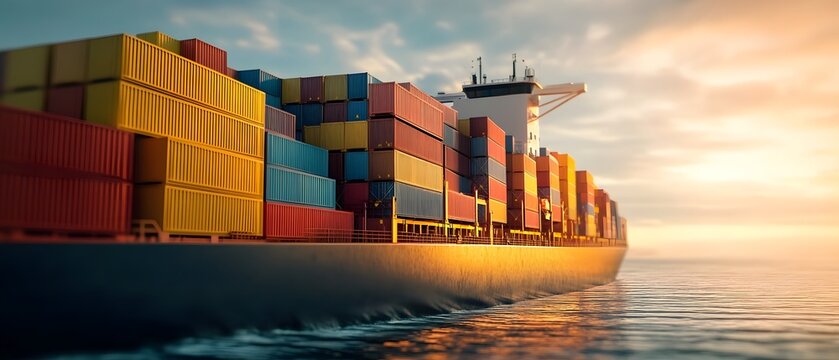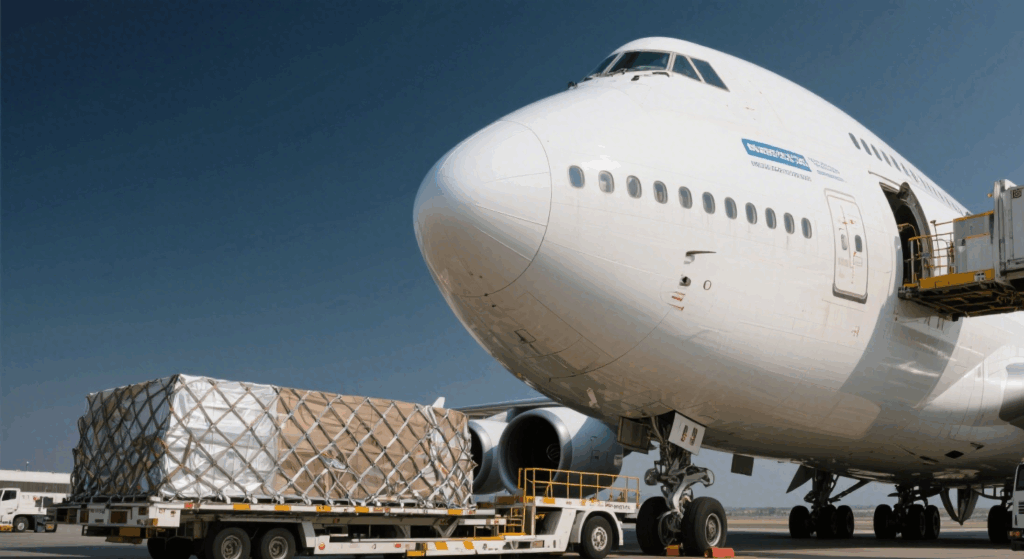- By Della tj
- September 19, 2025
- Sea Freight, Shipping
Managing sea freight China to UK is a critical task for businesses importing large volumes of goods. Although sea freight is slower than air, it remains the most cost-effective method for bulky shipments. By understanding costs, delivery schedules, and customs requirements, importers can streamline their logistics, cut expenses, and maintain consistent supply chains.
What Determines Sea Freight China to UK Costs?
Several variables influence container shipping prices:
- Container size and type: 20GP, 40GP, and 40HQ rates differ significantly.
- Port of origin: Shanghai, Ningbo, Shenzhen, and Guangzhou have varied rates.
- Destination port: Felixstowe, Southampton, and London Gateway handle most imports.
- Cargo type: Fragile, hazardous, or oversized cargo requires special handling.
- Seasonality: Q4 and pre-Chinese New Year push rates up by 20–40%.
- Fuel and surcharges: Adjusted monthly by carriers.
Additionally, inland trucking, warehousing, and customs clearance fees affect the overall shipping bill.
How Much Does Sea Freight from China to UK Cost in 2025?
| Container Size | Shanghai – Felixstowe | Ningbo – Southampton | Shenzhen – London Gateway | Notes |
|---|---|---|---|---|
| 20GP | $1,700 – $2,100 | $1,800 – $2,200 | $1,900 – $2,300 | Cheapest per trip but higher per CBM |
| 40GP | $2,900 – $3,400 | $3,000 – $3,500 | $3,100 – $3,600 | More efficient for larger cargo volume |
| 40HQ | $3,100 – $3,700 | $3,200 – $3,800 | $3,300 – $3,900 | Ideal for high-volume retail shipments |
These estimates exclude customs duties, VAT, and insurance.
Why Do Shipping Rates Differ Between Ports?
Costs differ due to distance, congestion, and port handling charges. For example, Felixstowe often offers lower rates than London Gateway, albeit with more congestion. On the other hand, Southampton benefits from shorter inland routes to the Midlands.
Case Studies: Real Shipments from China to UK
Case 1: Ningbo to Felixstowe (Furniture)
- Cargo: 1 × 40HQ container, 28 tons.
- Mode: FCL.
- Cost: $3,400.
- Transit Time: 31 days.
Case 2: Shenzhen to Southampton (Electronics)
- Cargo: 2 × 20GP containers, 20 tons.
- Mode: FCL.
- Cost: $4,600.
- Transit Time: 34 days.
How Long Does Sea Freight China to UK Take?
| Origin Port | Destination Port | Average Transit Time | Remarks |
|---|---|---|---|
| Shanghai | Felixstowe | 28–32 days | Direct, frequent sailings |
| Ningbo | Southampton | 30–34 days | Stable route, moderate congestion |
| Shenzhen | London Gateway | 32–36 days | Longer distance, higher surcharge |
| Guangzhou | Liverpool | 35–40 days | Less frequent, longer transshipment |
Transit times may extend due to weather, port delays, or customs inspections.
Should Importers Choose FCL or LCL?
| Mode | Best For | Cost Efficiency | Handling Risk | Clearance Time |
|---|---|---|---|---|
| FCL | Large shipments | High | Lower | Faster |
| LCL | Small consignments | Moderate | Higher | Slower |
FCL offers greater reliability and reduced risk, while LCL provides flexibility for businesses shipping smaller loads.
How Does Sea Freight Compare with Air and Rail?
| Mode | Cost per KG | Transit Time | Pros | Cons |
|---|---|---|---|---|
| Sea Freight | $0.5 – $2.0 | 28–40 days | Cheapest for large cargo volumes | Slow, risk of port congestion |
| Air Freight | $6 – $12 | 5–9 days | Fast, secure, ideal for urgent | Expensive, space limitations |
| Rail Freight | $2.5 – $4 | 20–25 days | Moderate cost and delivery speed | Indirect via EU, customs complexity |
Sea freight remains the most practical solution for bulk cargo despite longer transit times.
What Customs Documents Are Needed for UK Imports?
| Document | Purpose |
|---|---|
| Commercial Invoice | Declares cargo value for customs clearance |
| Packing List | Lists weights, quantities, and details |
| Bill of Lading | Acts as transport contract with carrier |
| Certificate of Origin | Proves manufacturing country |
| Import License | Required for regulated products |
| Insurance Certificate | Protects against cargo loss or damage |
Accurate paperwork prevents costly delays and penalties during UK customs clearance.
How Can Importers Reduce Sea Freight China to UK Costs?
Importers can adopt several strategies:
- Book early to avoid seasonal rate hikes.
- Consolidate shipments into FCL whenever possible.
- Work with multiple ports to gain flexibility.
- Partner with freight forwarders offering bulk discounts.
- Schedule shipments outside Q4 to avoid congestion.
Effective planning significantly reduces overall shipping costs.
What Future Trends Will Impact Sea Freight China to UK?
Key developments include:
- Green shipping: New eco-vessels and environmental surcharges.
- Digital booking systems: Real-time tracking and transparent rates.
- Port automation: Faster turnaround at Felixstowe and Southampton.
- E-commerce growth: Higher container demand from Chinese suppliers.
Importers that adapt early to these trends will remain competitive.
Conclusion
The sea freight China to UK trade lane is vital for global commerce. Although slower than air transport, sea freight remains the most affordable and reliable option for bulk shipments. In conclusion, companies that plan ahead, prepare proper documents, and partner with trusted forwarders will achieve smoother operations, lower costs, and secure long-term supply chain stability.
- Consult TJ China Freight Forwarding for the lowest quote. They will provide you with reliable, cost-effective service.
FAQs
Q1.How can companies reduce sea freight China to UK costs effectively?
Importers cut expenses by consolidating shipments, booking off-season, and partnering with experienced freight forwarders for bulk rates.
Q2.Which UK ports handle most sea freight from China?
Felixstowe, Southampton, and London Gateway are the primary entry points for containerized goods arriving from China.
Q3.What is the average delivery time for sea freight to the UK?
Transit time usually ranges between 28 and 36 days depending on the chosen port and route.
Q4.How do customs documents affect sea freight costs?
Incorrect or missing paperwork causes clearance delays, storage charges, and increased costs during the import process.
Q5.What kind of cargo is ideal for LCL shipments from China?
LCL is best for smaller consignments under 15 CBM, such as clothing, accessories, or household goods.




